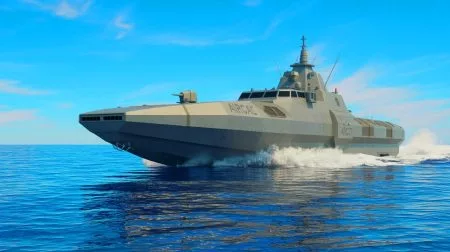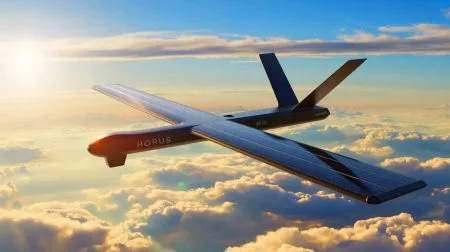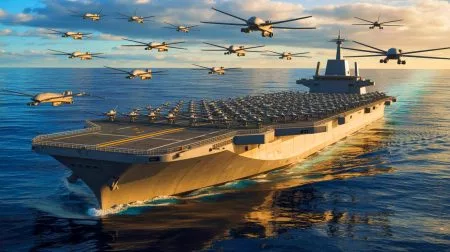| IN A NUTSHELL |
|
The F-35 fighter jet has long been a symbol of cutting-edge military technology, and Lockheed Martin is committed to keeping it at the forefront. As the defense landscape evolves, the company is integrating more advanced technologies to ensure the F-35 remains a critical asset for air dominance. Recent announcements suggest that the F-35 could soon feature capabilities that were originally developed for the Next Generation Air Dominance (NGAD) program, potentially making it pilot-optional. This marks a significant evolution in military aviation, promising enhanced functionality and flexibility.
The Evolution of the F-35: Integrating Sixth-Gen Features
Lockheed Martin’s journey with the F-35 has been marked by continual innovation. Although the company lost the U.S. Air Force’s NGAD contract to Boeing, it did not deter them from advancing the F-35’s capabilities. Today, the F-35 is positioned to incorporate around 80% of the features expected from a sixth-generation fighter jet. These advancements include a modern electronic warfare system, cutting-edge radar technology, and improved stealth through the latest infrared-absorbing coatings. The aim is to deliver superior capabilities while maintaining cost efficiency. The F-35 has already demonstrated some autonomous functions, a testament to its evolving technology.
In 2023, the F-35 showcased its autonomous capabilities when it managed to fly for 11 minutes post-pilot ejection. While full autonomy has not been publicly discussed, the potential for a pilot-optional aircraft is becoming a reality. This shift towards more autonomous features could redefine operational strategies and enhance mission adaptability.
Introducing the “Supercharged” F-35
The term “supercharged” F-35 was introduced by Lockheed Martin CEO Jim Taiclet, highlighting a vision for an enhanced version of the aircraft. This iteration aims to deliver substantial sixth-generation capabilities at a fraction of the cost. The F-35 is described as the “quarterback of the skies,” integrating various domains such as air, land, sea, space, and cyber operations. This integration ensures mission success and air dominance for the U.S. and its allies.
Beyond being a traditional fighter jet, the F-35 is a force multiplier. It excels in gathering, processing, and disseminating crucial data, thereby strengthening global alliances and keeping pilots ahead of emerging threats. The aircraft’s design allows for potential improvements without requiring a complete redesign, as stated by Taiclet. Innovations in the aircraft’s shape, particularly around engine inlets and nozzles, promise further enhancements in performance.
Challenges and Opportunities in Upgrading the F-35
While the potential upgrades to the F-35 are promising, they come with their own set of challenges. As highlighted by Lockheed Martin, integrating new equipment and software updates requires careful planning and execution. The company is committed to a gradual rollout of these features, ensuring quality is maintained in large-scale production. This phased approach is crucial to avoid overloading the system with simultaneous upgrades, which could compromise the aircraft’s performance.
These improvements are expected to be ready in a few years, but reaching production stages will take time. The iterative process allows Lockheed Martin to refine technologies and address any unforeseen issues that may arise. This strategy ensures that the F-35 remains a reliable and effective tool in the defense arsenal, capable of adapting to new threats and missions.
The Broader Implications of an Optionally Manned F-35
The notion of an optionally manned F-35 introduces exciting possibilities for military strategy. By reducing the dependency on pilots, missions can be executed with greater flexibility and reduced risk to human life. This capability is particularly advantageous in high-threat environments where traditional manned operations would be too dangerous.
Moreover, pilot-optional aircraft can be deployed in scenarios requiring prolonged endurance or precision maneuvers that might exceed human limitations. The F-35’s evolving technology demonstrates Lockheed Martin’s commitment to innovation, ensuring the aircraft remains at the forefront of military aviation. As these advancements unfold, the F-35 will continue to play a pivotal role in shaping the future of air combat operations.
As Lockheed Martin continues to refine and enhance the F-35, the possibilities for its applications in modern warfare are vast. The integration of sixth-generation technologies promises to keep this aircraft relevant for years to come. With these advancements on the horizon, how might the role of fighter jets evolve in future military strategies?
Did you like it? 4.5/5 (30)







Das klingt spannend, aber wie sicher ist diese Technologie wirklich? 🤔
Ich hoffe, dass die Kosten für die Wartung dieser “supercharged” F-35 nicht durch die Decke gehen.
Wird die Pilotenausbildung nun überflüssig? Oder braucht es neue Fähigkeiten?
Wow, die Zukunft ist jetzt! Ich kann es kaum erwarten, diese Jets in Aktion zu sehen. 🚀
Ich frage mich, wie die anderen Länder auf diese Entwicklung reagieren werden.